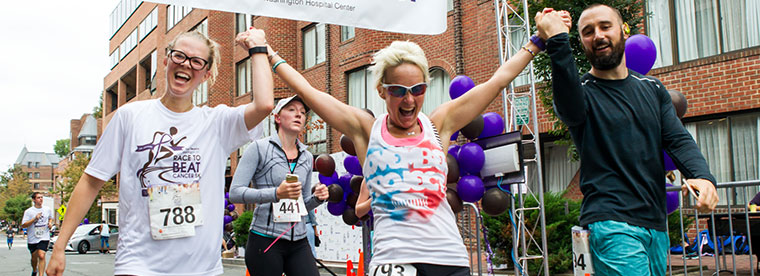With that in mind, here are four things you can do to minimize your risk of injury while running outdoors.
1. Be aware of your surroundings
The most common injuries I see among runners are ankle sprains. They’re usually caused by road hazards, such as stepping in potholes or on or off curbs. Watch where you step.
But that’s not all you need to watch for. Being aware of your surroundings also means being proactive about your own safety, especially if you use headphones or earbuds. You can’t assume other people can see you. Distracted drivers may not notice someone running in front of them, and people chatting on sidewalks are often blissfully unaware of oncoming runners.
Ideally, you should have full sensory awareness as you’re running. That means keeping your eyes and ears open. But I know many people find it hard to run without music, so if you do have earbuds in, use your eyes and pay extra attention to the world around you.
2. Stretch your muscles before and after running
It’s important to keep your muscles flexible to allow them to reach their full range of motion and prevent soreness and injury. Stretch before and after a run. In particular, I recommend stretching your calves. These muscles are constantly under strain when you’re running. Weak calves can cause a range of common running injuries, including shin splints and Achilles tendonitis.
Try this calf stretch:
- Stand two to three feet from a wall.
- Place your left foot behind your right foot. Both feet should be pointing forward, with a comfortable distance between them.
- Bend your right leg forward while pressing the wall with your arms. Keep your left leg straight and your left foot firmly planted.
- Keep your back straight, and hold this position for 30 to 60 seconds.
- Repeat these steps with your right foot behind your left.
3. Keep your bones strong with a nutrition-filled diet
In addition to your muscles, you also want to keep your bones in mind. Conditions such as osteomalacia – which causes bones to soften – can make you more prone to running injuries, and often occurs as a result of a vitamin D or calcium deficiency. Keep your bones strong and ready to run with a nutrient-filled diet of foods such as:
- Dairy products: Milk, cheese and yogurt are great sources of calcium.
- Beans: Soybeans and white beans are good calcium options for people who are lactose-intolerant.
- Fish: Many types of fish provide calcium or vitamin D. Some, like salmon, contain both.
4. Give your legs time to rest
Running five miles on a treadmill is not the same as running five miles outdoors. You have to account for changes in elevation and terrain. And as I mentioned earlier, you’re also using your muscles differently. Giving your body time to rest after a long run is vital to prevent injury. Most running injuries happen because of overuse – performing the same repetitive motions without enough resting time. Luckily, these injuries can almost always be treated without surgery. But they can affect your ability to perform everyday activities and keep you from exercising.

